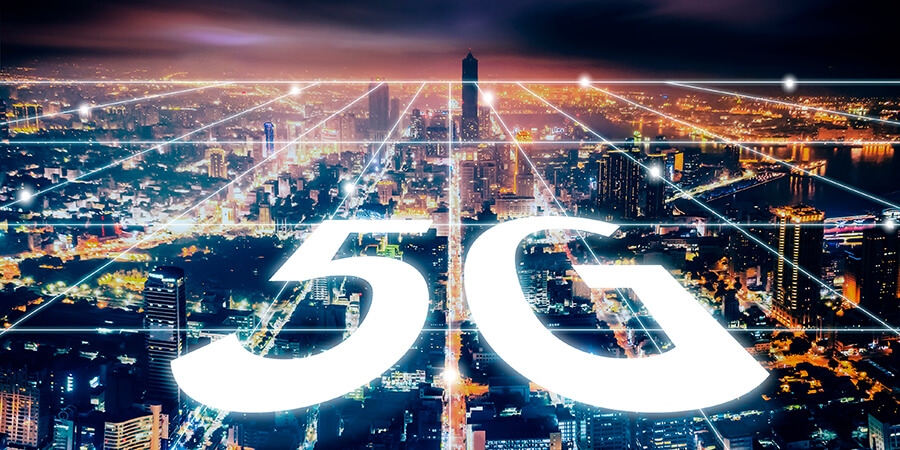5G technology in Indonesia is still considered to be in an incubation period where digital infrastructure still needs improvement.
The Indonesian government’s target is an equal distribution of commercial 5G networks by 2025. However, with low 5G penetration and a spectrum shortage, the road to 5G still appears to be far ahead.
During a keynote address at Huawei’s Global MBB Forum 2022 in Bangkok, I Gede Darmayusa, CTO, XL Axiata Indonesia, shared how they are exploring new possibilities powered to overcome these hurdles and achieve their 5G goals in Indonesia.
He stressed two major factors that explain why Indonesia still hasn’t moved forward with its 5G plans. First is that handset 5G penetration in the country is still at less than 2% of its 3 million subscribers. A second is that the main spectrum for 5G has still not been released by the government.
“With these two, I think that 5G is still incubating, but we are pretty much optimistic that it is going to be fast once the spectrum is released and because we also see the trend year by year, the handset and the subscribers that use 5G is increasing,” said I Gede Darmayusa.
He explained that having a shortage of spectrum adds to their operating expenses every time they have to increase network capacity. However, the company has been experiencing gains this year as connectivity in the country continues to grow.
He added, “Even though we have the least spectrum in the country, in the market, this year, we have the best experience that’s already being announced by all the major crowdsource data. Our user experience increased 41% year on year, the daily payload 32% and infant latency, we can manage 7% year on year. We have 57 million subscribers with more than 39,000 physical sites and the traffic is reaching 28 petabytes per day.”
XL also continues to maximize its network capabilities. Darmayusa highlighted their initiatives in areas such as increasing network capacity as well as network optimization, which includes radio. The telco giant is also focusing on 3G to 4G technology rearrangements to boost the download speed of its network.
However, it may take a few more years for Indonesia to fully maximize the benefits of 5G across different sectors. “Based on our assessment, in 2025, 5G penetration may be reaching around 8–10%, still below the business case justifying 5G; so it’s mainly for branding. Only in 2030, 2027, actually, where the handset penetration is about 20%, that we can say 5G is becoming massive.”
Darmayusa said that XL will continue innovating its network towards 5G with all investments on 4G also geared towards 5G; all bands to 5G to achieve high spectrum efficiency and lower cost per GB; and all services on 5G focusing on eMBB and assessing the FWA as well as enterprise.
Meanwhile, XL Axiata’s part company, Axiata, also provided insights at the MBBF event and talked about how low-cost bit Factory serves as a foundation for telco-to-techco evolution.
Powering the digital transformation in various markets across Southeast Asia and South Asia, Axiata is now addressing different kinds of challenges in these growing markets, including exponential data traffic growth.
Thomas Hundt, Axiata Group’s chief strategy and technology officer, stated, “This is not Axiata’s problem alone. The data traffic obviously is exponentially growing. But an ARPU is relatively flat or declining. The capex needs which we have to activate in a way to build the networks are of a very, very staggering amount for all of us.”
Hundt said that while they would be very much willing to enable faster data speeds and better latency for the consumers, they would still have to tackle the production cost challenge. He said the Axiata approach — or what they call a “collective brain” — is where they have pooled their ideas to collectively solve that problem, leading to a very low-cost bit factory.
He explained, “We have defined for ourselves a target of 10 cents per GB production costs, simply because we can’t afford any higher and the yield, which we are realizing per GB, is ever declining as well, because ARPU is flat, traffic is going through the roof. A number of activities we have put together for ourselves, which are about tackling the legacy, sunset things, 3G, voice over LTE, open networks, in a way, spectrum optimization, spectrum efficiency, network de-risking, very much autonomous networks and lean operations, as activities to really get there and to achieve the 10 cents a GB by 2024.”
And this has become quite a success. As Hundt noted, “We started in 2020 at above 35 cents per gigabyte, and literally every year, we have seen a significant decline.”
On the other hand, he said the yields and the costs are not giving them an impressive data margin. And that’s what they are focusing on through structural transformation and looking permanently at their vendor and partner setup as well as their strategies.
Looking ahead, Hundt said that the decline in margins is not the only thing to be concerned about; they must also resolve what he calls a capex tsunami: “Because we believe that this capex tsunami, which we have to continuously manage, is very, very challenging for us to afford. But also the infrastructure and the assets, which we have to put in play, are eventually utilized better if we share — if we collaborate in the industry and [with the] partner.”
Hundt also said that the low-cost bit factory, as well as the IT transformation they have gone through, better enables them to shift their markets to the 5G world. They’re hoping that in 2023, they can plant flags in these markets to be 5G ready.






